The Electric Porsche Macan Is More Than a Tall Taycan
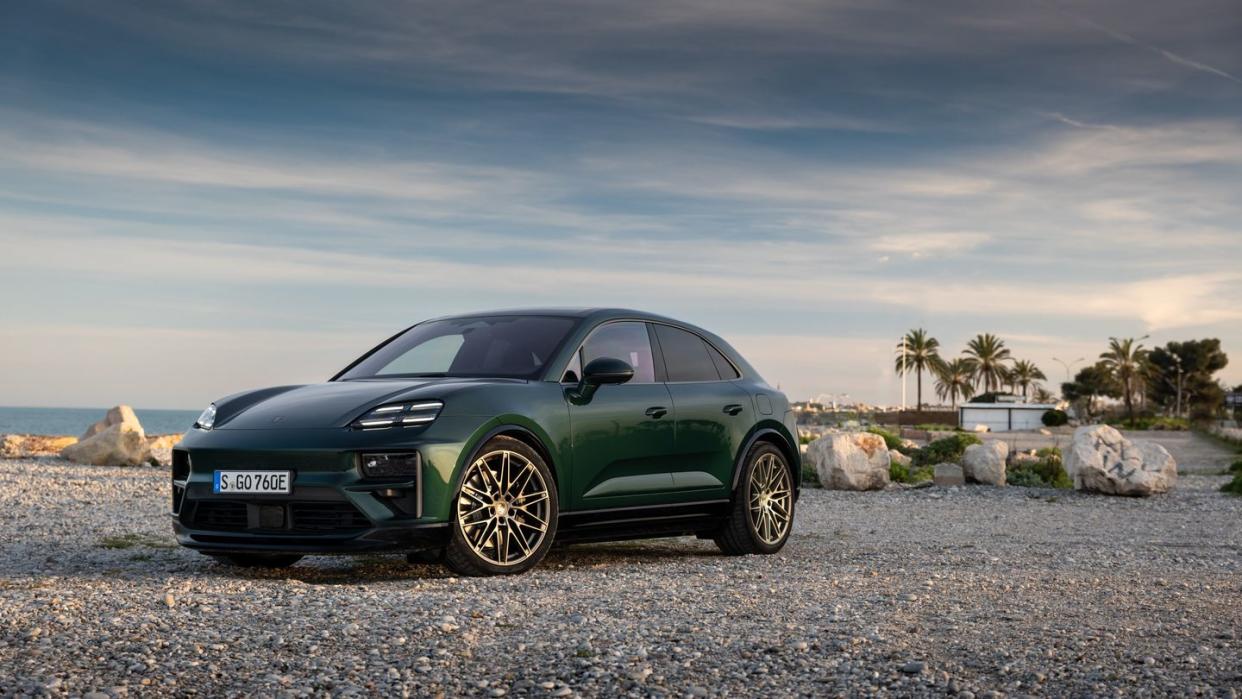
One of the accusations often leveled at faster EVs is that, in terms of experience, they become essentially interchangeable. Remove the charisma of a combustion engine, goes the argument, and a vehicle loses its soul—performance quantified by the impersonal violence of huge horsepower delivered in near silence rather than subjective joy. They are hugely effective, but rarely involving—so why choose one over another?
It is an argument that the all-new, all-electric Porsche Macan quickly refutes, as the contrast between it and Porsche’s other EV, the Taycan, is so marked. These are two electrically powered cars from the same maker with overlapping power outputs and pricetags, yet their characters are chalk and cheese. You might be surprised to hear that it is the taller, heavier, and less technically advanced SUV that emerges as the experiential highlight.
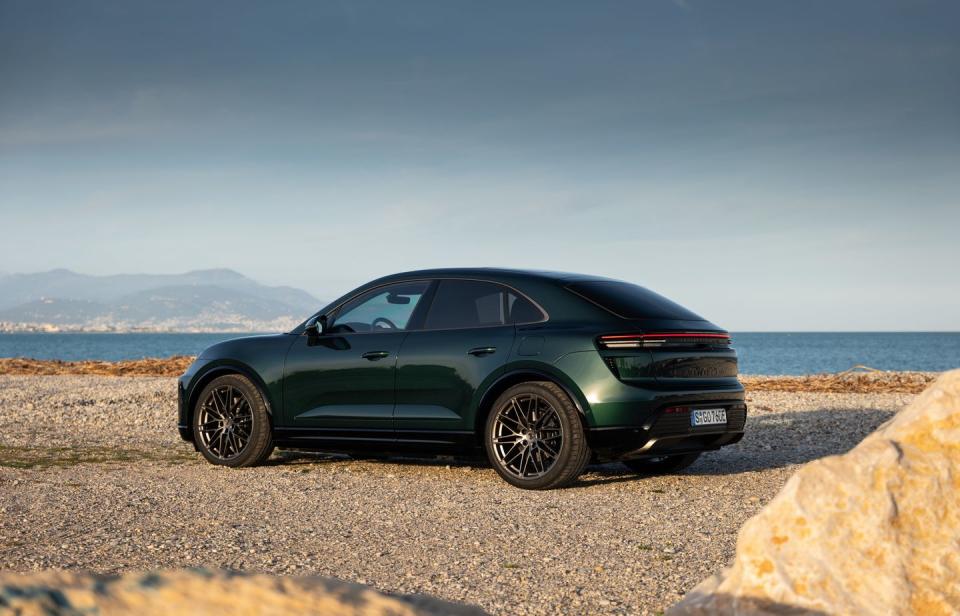
The first issue with the electric Macan is one of confusion. Despite similar proportions, it is completely unrelated to the gasoline-powered Macan. The existing Macan is a twice-facelifted version of a car that was launched in 2014, and will continue to be sold alongside the entirely new EV versions. These are very different cars from different generations, but will carry the same name—the Macan 4 and Macan Turbo being electric, the Macan, Macan T, Macan S and Macan GTS running on gas. Chronologically, it is as if Porsche is still selling the 991-generation 911 alongside the 992. Yet with more than 800,000 Macans sold around the world so far, the company thinks name recognition is more important than the risk of puzzling potential customers.
The basics are as we reported back in January, so I’ll give a summary rather than a full rehash. The new Macan sits on the Premium Platform Electric (PPE) architecture that Porsche and Audi have jointly developed, and is therefore a generation on from the J1 platform that underpins the Taycan. Only one battery pack will be offered at launch, with a sizeable 95 kWh of usable capacity, and 800-volt architecture allowing DC fast charging rates of up to a searing 270 kW.
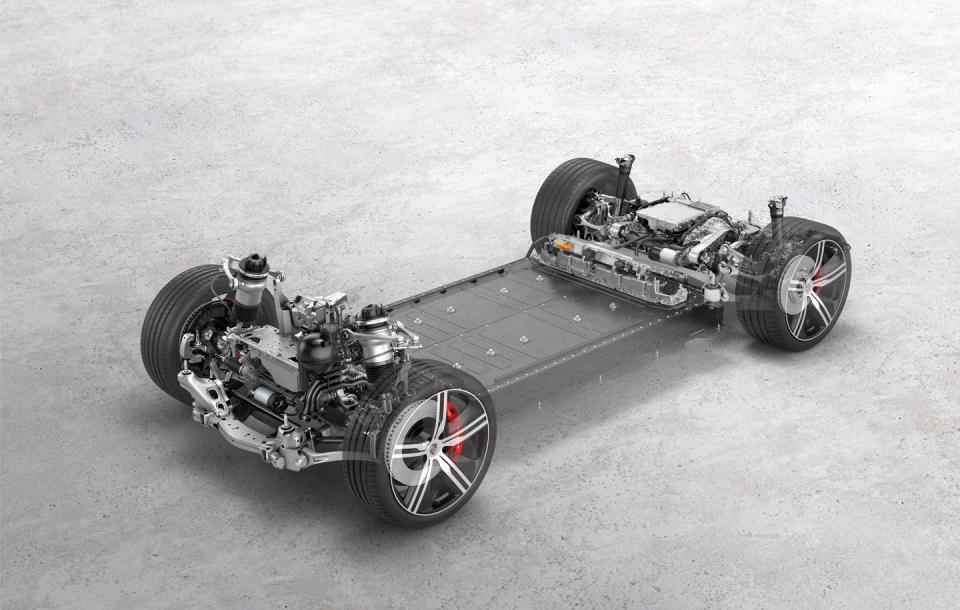
And both Macan 4 and Macan Turbo will be all-wheel driven with a motor turning each axle. The big hardware difference is that the Turbo gets a brawnier rear motor, this featuring a silicon carbide inverter to allow faster switching, and can therefore deliver a system peak of up to 630 hp in its Launch Control mode, or 576 hp continuously. The Macan 4 has peaks of 402 hp in Launch Control overboost and 382 hp the rest of the time. All U.S.-bound electric Macans will have air suspension as standard along with twin-valve adaptive dampers, with rear steering an option. The Turbo also gets a torque vectoring rear differential as standard. What it doesn’t have is any of the active anti-roll technology that Porsche offers on Panamera and Taycan.
Dimensionally the Macan EV has grown, but only slightly. The 188.4-inch overall length is 2.3 inches bigger than the first-gen, and the 113.9-inch wheelbase has expanded by 3.4 inches. While the basic proportions of the two cars are similar, the differences are very obvious up close, with the new car’s Taycan-style headlights and smaller, lower front aperture the most obvious distinctions. Aerodynamic performance has defined many of the EV’s lines, with a flat underbody and a pop-up rear wing on the tailgate working to give an impressively efficient 0.25 drag coefficient. Subjectively the new Macan isn’t as handsome as the existing car, but it definitely has more presence.
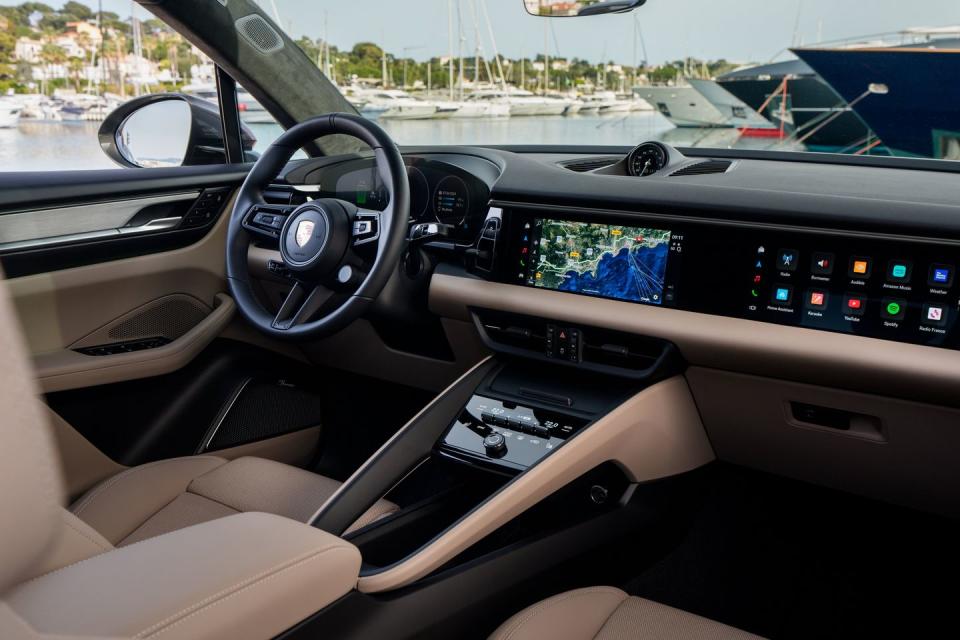
The generation gap feels greatest when climbing into the new Macan, the interior being where it feels closest to the Taycan. Two screens are standard, a reconfigurable 12.6-inch digital instrument pack and a 10.9-inch touchscreen in the center of the dashboard. Buyers will also be able to specify another 10.9-inch display in front of the passenger seat, and a head-up display that can now project augmented reality instructions onto the windshield— showing which way to go at intersections, or displaying a red line if you wander out of a marked traffic lane. All this is being run on Google’s Android Automotive operating system, which works more cleanly and intuitively than in its Volvo and Polestar applications. Porsche has also kept a separate mini-console for heating controls, still including temperature buttons.
Despite the wheelbase stretch, space is still tight in back where a full-sized adult will struggle for legroom if sitting behind somebody the same size. But the Macan 4 EV’s luggage space has actually increased over the gasoline Macan, with 19 cu-ft in the trunk with the rear seats in place, plus a dinky 2.9 cu-ft frunk compartment intended primarily for charging cables. (The Turbo has slightly less room, with a 16.9 cu-ft trunk.)
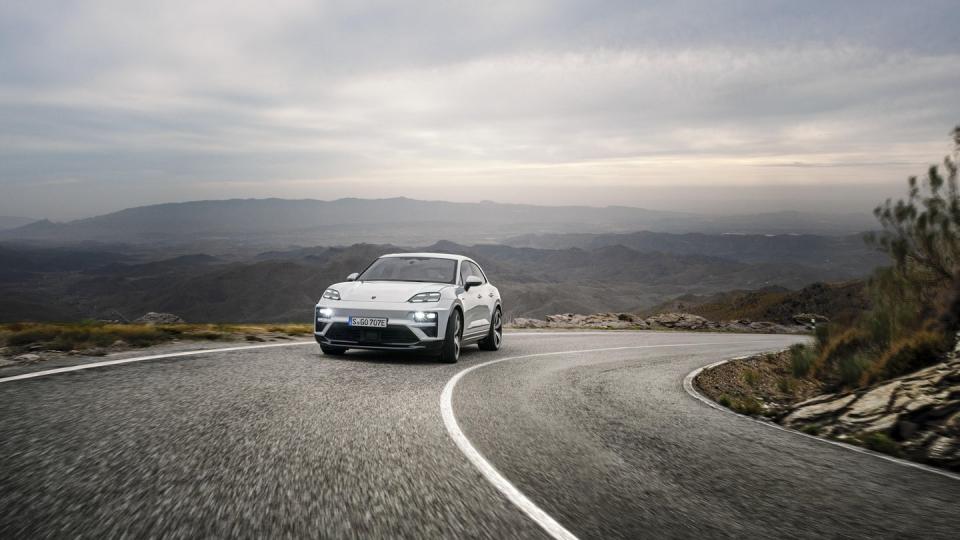
The driving experience delivers several surprises, with the first being how softly suspended the Macan EV feels, especially when compared to the lashed-down Taycan. In the Normal dynamic mode, the Macan’s adaptive dampers and air springs were plaint over urban bumps and some of the rougher surfaces of a test route that ran from the city of Nice to the famous Route Napoleon in France. But they were also soft enough to allow the car to adopt a nose-up attitude under acceleration, and the sensation of roll under cornering loads—both sensations that the Taycan has practically eliminated, even without its optional Active Ride system.
This doesn’t mean the Macan EV rolls like a ‘Seventies Cadillac, of course. Body movement is limited and proportionate to the forces that are being applied at any point in time, selecting the Sport or Sport Plus mode tightens both springing and damping enough to significantly reduce it. But not to eliminate it—with the motion enough to make the new Macan feel more like its gasoline sister than the lashed-down Taycan.
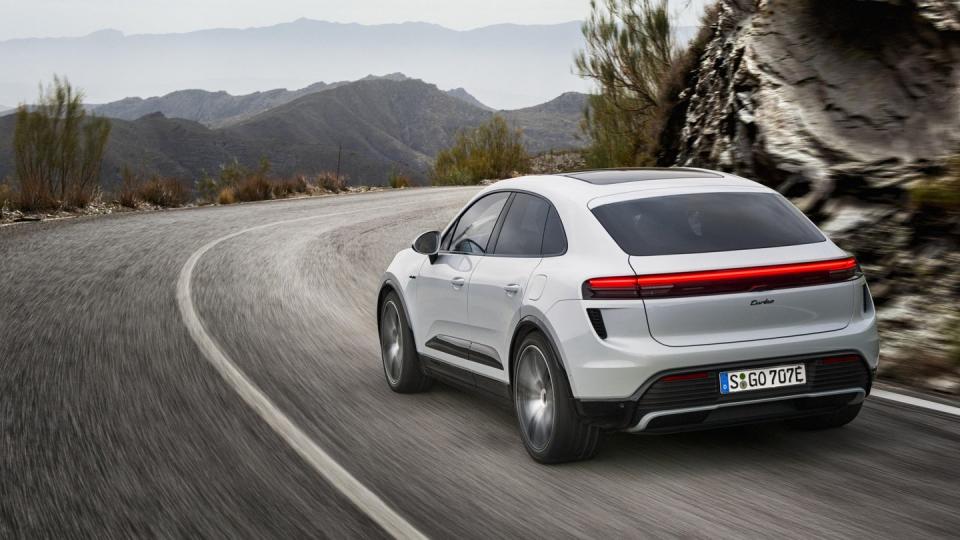
Performance is strong in both versions, painfully so in the Turbo. The less powerful Macan 4’s peak 382-hp output is lower than that of the turbo V-6 Macan GTS, and the EV’s quoted 4.9-sec 0-60 mph time is 0.6-sec slower than the range-topping gasoline model. But although there wasn’t a GTS on hand for immediate comparison in France, I have no doubt the EV will prove itself quicker over real roads given the immediacy of its reactions and ability to almost instantly deliver its 479 lb-ft torque peak. The GTS’s gearbox would still be working out its kickdown strategy as the Macan 4 projects itself down the road.
With 50 percent more power and torque than the Macan 4, the new Turbo is—to no surprise—the fastest Macan ever. And not by a small margin. Full throttle acceleration is close to painful, with the forces barely seeming to diminish as the numbers on the speedometer scroll upwards. Porsche claims a 3.1-second 0-60 mph time—which goes with the territory for any sharp-end EV—but real context comes with the official 11.7-second 0-124 mph time. That is a full 5.2 seconds inside the corresponding time for the Macan GTS. That’s not different league, it’s different sport.
But the Turbo is also the heaviest Macan so far; 5393 lbs on Porsche’s numbers, 146 lbs more than the Macan 4, and 1071 lbs more than the gasoline GTS. That half-a-Miata supplement does become obvious when asking the Turbo to change direction. The ability to redistribute torque from front to rear, and to juggle it across the rear axle, means that the Turbo puts up a spirited resistance to understeer. But in tighter corners it will ultimately surrender. The optional rear-wheel steering on my test Turbo also gave a very aggressive turn-in as it tried to fight physics. I actually preferred the calmer, slower reactions of the Macan 4 without it.
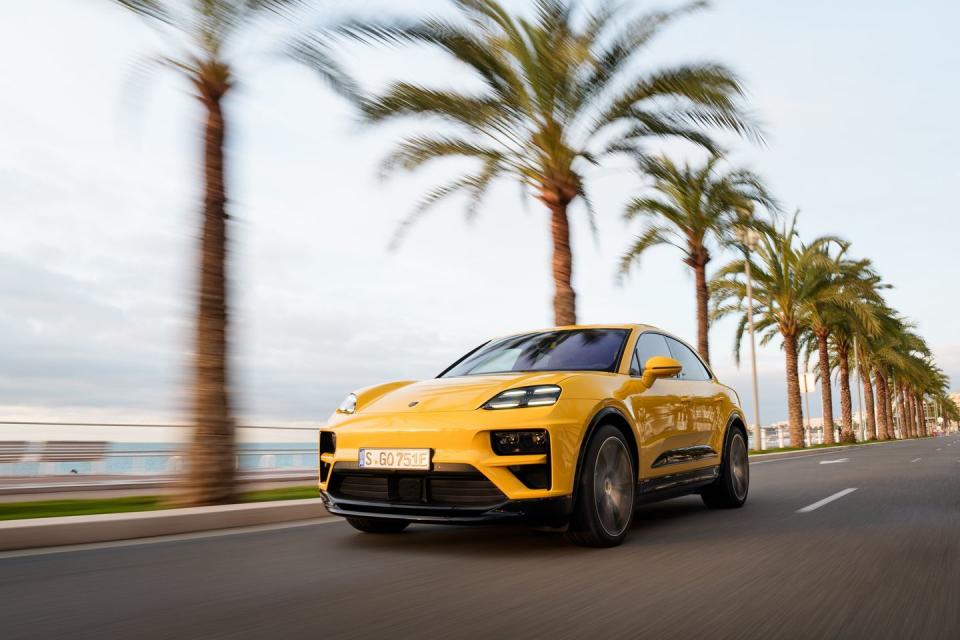
One driving characteristic is carried over from the Taycan: the lack of a strong regeneration mode. Porsche is still holding out against one-pedal operation, or anything like it, and the Macan EV’s selectable regeneration function is so weak it could barely stop the car from accelerating on downhill gradients. Regen is always a personal preference – but it would be nice to have the choice.
Porsche has successfully trodden a fine line with the Macan EV—it’s a very different car from the Taycan, yet also recognizably linked to its combustion sister in more than just the way it looks. The company will, as you would expect, be charging a significant supplement for the combination of newness and environmental virtue; the Macan 4 starting at $78,800, the Macan Turbo at $105,300. But Porsche does seem to have delivered its second electric album successfully.
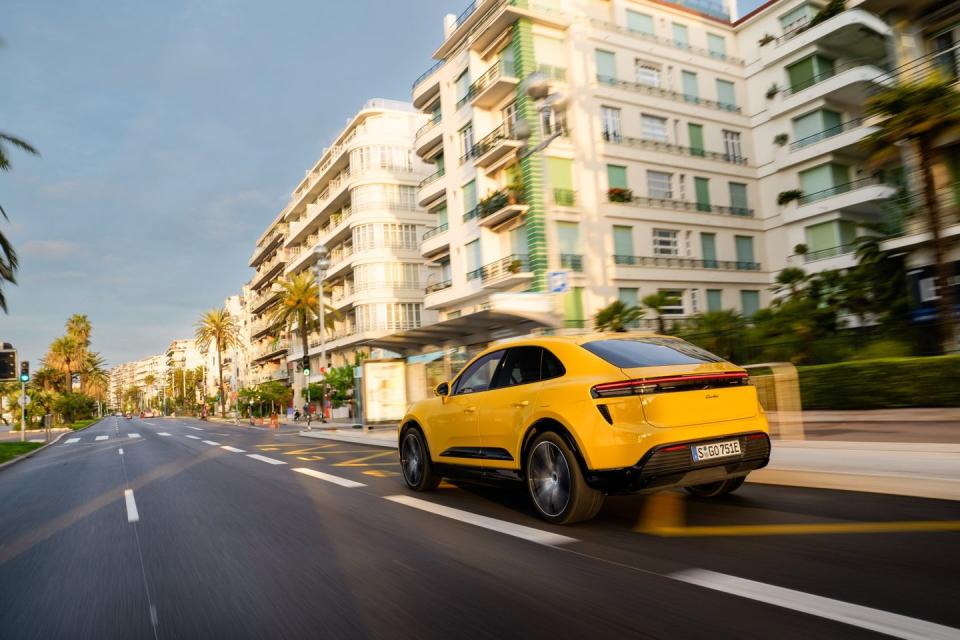
You Might Also Like

